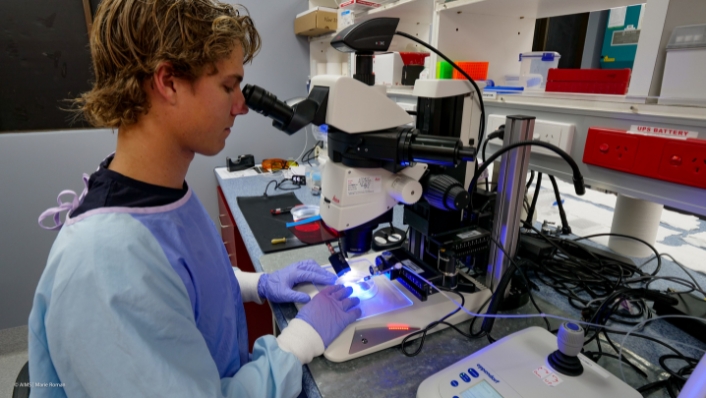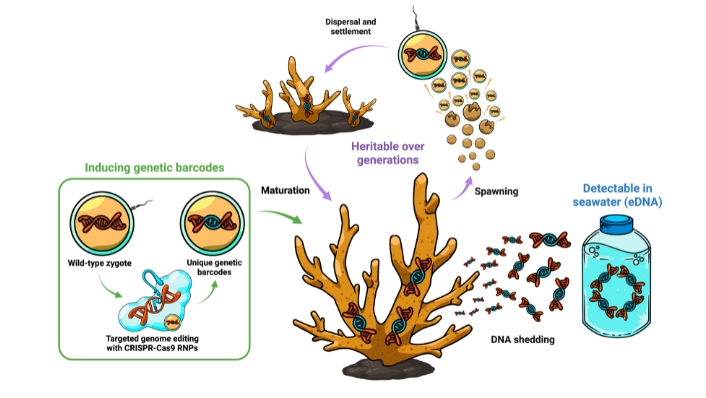New tools are needed to understand the resilience of corals, the efficacy of coral seeding initiatives and their capacity to cope with rising temperatures in response to global heating trajectories.
This research seeks to harness cutting-edge gene editing technologies to build a range of tools that can help us answer a wide range of questions, informing more effective strategies for intervention and management.
- First, our research seeks to identify genes that underpin characteristics like heat resilience, bleaching tolerance, and growth, using gene editing techniques with the CRISPR/Cas9 system. By introducing precise DNA edits into corals’ DNA, we can disrupt certain genes and thus test their function under various conditions.
- Second, our research investigates how inserting new genes into coral can change their function, such as increasing their heat tolerance or growth rate. This is done by adding new DNA to the coral (using synthetic gene fragments), which can make new genes that could change the corals fitness, such as making them more heat tolerant.
- Third, our research seeks to develop a scalable approach to track individual corals and their offspring. By combining two novel genomic technologies, CRISPR-Cas9 gene editing and environmental DNA (eDNA) metabarcoding, we can insert unique genetic tags into coral, which are heritable over generations and detectable in seawater samples.
Researchers
Max Moonier, AIMS and UWA
Dr Luke Thomas, AIMS
Dr Line Bay, AIMS
Dr Ryan Lister, UWA
Dr Phillip Cleves, Department of Biology, Johns Hopkins University
Dr Yui Sato, AIMS
This research is supported by
Australian Institute of Marine Science
University of Western Australia
Johns Hopkins University
This page was updated in October 2025




